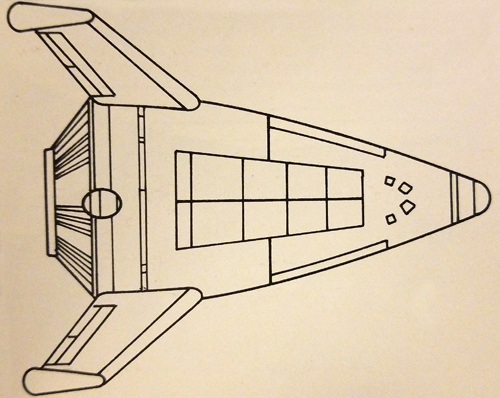Difference between revisions of "Lindbergh class (FASA)"
From Trekipedia
m |
|||
| Line 1: | Line 1: | ||
{{DISPLAYTITLE:''Lindbergh'' class}} | {{DISPLAYTITLE:''Lindbergh'' class}} | ||
==FASA Timeline== | ==FASA Timeline== | ||
| − | + | {{ImageInfoBox|name=''Lindbergh'' class|imgname=lindbergh_class-sfc|caption=''Lindbergh'' class ([[Star Trek: Spaceflight Chronology (Book)|SFC]])}} | |
| + | {{TableRow|title=Commissioned|data=[[FASA Chronology: 2000s#2003|2003]]}} | ||
| + | {{TableRow|title=Advertising|data={{AmazonLink|link=https://www.amazon.com/Star-Trek-Spaceflight-Chronology-Goldstein/dp/0671790897/ref=as_li_ss_il?_encoding=UTF8&psc=1&refRID=TJZTABEXEQAQAE0VRPDG&linkCode=li2&tag=fednet-20&linkId=85409533ec842aac7cf7935895f46ceb&language=en_US|imglink=//ws-na.amazon-adsystem.com/widgets/q?_encoding=UTF8&ASIN=0671790897&Format=_SL160_&ID=AsinImage&MarketPlace=US&ServiceVersion=20070822&WS=1&tag=fednet-20&language=en_US}}}} | ||
| + | |}</div> | ||
The ''Lindbergh'' class space ferry was launched in [[FASA Chronology: 2000s#2003|2003]], filling the role of the old [[Space Shuttle#FASA_Timeline|Space Shuttle]] as the primary surface-to-orbit spacecraft. Early versions of the ''Lindbergh'' class were equipped with booster rockets, much like the Shuttle, but advances in early 21st century technology eventually eliminated the need them; the class was also equipped with eight cargo ports per side, for ready cargo access. The ''Lindbergh'' class played a vital role in the completion of the [[Orbital Power Satellite#FASA Timeline|Orbital Power Satellite]] network, which guaranteed energy independence for [[Earth]], as well as in the construction of orbiting satellite cities.<ref name="SFC"/> | The ''Lindbergh'' class space ferry was launched in [[FASA Chronology: 2000s#2003|2003]], filling the role of the old [[Space Shuttle#FASA_Timeline|Space Shuttle]] as the primary surface-to-orbit spacecraft. Early versions of the ''Lindbergh'' class were equipped with booster rockets, much like the Shuttle, but advances in early 21st century technology eventually eliminated the need them; the class was also equipped with eight cargo ports per side, for ready cargo access. The ''Lindbergh'' class played a vital role in the completion of the [[Orbital Power Satellite#FASA Timeline|Orbital Power Satellite]] network, which guaranteed energy independence for [[Earth]], as well as in the construction of orbiting satellite cities.<ref name="SFC"/> | ||
| − | + | {{InfoBox|float=left|name=Specifications}} | |
| − | + | {{TableRow|title=Length|data=61 [[meter|m]]}} | |
| − | + | {{TableRow|title=Beam|data=51 [[meter|m]]}} | |
| − | {| | + | {{TableRow|title=Mass|data=2.5 million [[kilogram|kg]]}} |
| − | + | {{TableRow|title=Payload Bay|data=10,000 [[cubic meter|m³]]}} | |
| − | + | {{TableRow|title=Maximum Payload|data=1,000,000 [[kilogram|kg]]}} | |
| − | | | + | {{TableRow|title=Crew|data=6}} |
| − | | | + | {{TableRow|title=Passengers|data=125}} |
| − | + | |}</div> | |
| − | | | + | {{InfoBox|float=left|name=Performance}} |
| − | | | + | {{TableRow|title=Velocity|data=11,000 [[meter|m]]/second ([[Earth]] escape)}} |
| − | + | {{TableRow|title=Range|data=Orbital to circumlunar}} | |
| − | | | + | {{TableRow|title=Landing/Takeoff|data=Horizontal Takeoff and Landing (HTOL)}} |
| − | | | + | {{TableRow|title=Engines|data=Chemical Boost Single Stage to Orbit (SSTO)}} |
| − | + | {{TableRow|title=Engine Configuration|data=Aerospike Plug nozzle with 24 coordinated small engines for greater efficiency and reliability}} | |
| − | | | + | |}</div> |
| − | | | + | {{References}} |
| − | |||
| − | | | ||
| − | | | ||
| − | |||
| − | | | ||
| − | | | ||
| − | |||
| − | | | ||
| − | |} | ||
| − | </div> | ||
| − | |||
| − | |||
| − | {| | ||
| − | |||
| − | |||
| − | | | ||
| − | | | ||
| − | |||
| − | | | ||
| − | | | ||
| − | |||
| − | | | ||
| − | | | ||
| − | |||
| − | | | ||
| − | | | ||
| − | |||
| − | | | ||
| − | |} | ||
| − | </div> | ||
| − | |||
| − | |||
| − | |||
<references> | <references> | ||
| − | <ref name="SFC"> | + | <ref name="SFC">{{RefSFC}}</ref> |
</references> | </references> | ||
| − | |||
[[Category:Library]] | [[Category:Library]] | ||
[[Category:Ships & Vehicles]] | [[Category:Ships & Vehicles]] | ||
| Line 64: | Line 33: | ||
[[Category:RPG]] | [[Category:RPG]] | ||
[[Category:FASA]] | [[Category:FASA]] | ||
| − | [[Category: | + | [[Category:FASA Timeline]] |
Revision as of 18:35, 13 April 2020
FASA Timeline
The Lindbergh class space ferry was launched in 2003, filling the role of the old Space Shuttle as the primary surface-to-orbit spacecraft. Early versions of the Lindbergh class were equipped with booster rockets, much like the Shuttle, but advances in early 21st century technology eventually eliminated the need them; the class was also equipped with eight cargo ports per side, for ready cargo access. The Lindbergh class played a vital role in the completion of the Orbital Power Satellite network, which guaranteed energy independence for Earth, as well as in the construction of orbiting satellite cities.[1]
Specifications
| Length | 61 m |
| Beam | 51 m |
| Mass | 2.5 million kg |
| Payload Bay | 10,000 m³ |
| Maximum Payload | 1,000,000 kg |
| Crew | 6 |
| Passengers | 125 |
Performance
| Velocity | 11,000 m/second (Earth escape) |
| Range | Orbital to circumlunar |
| Landing/Takeoff | Horizontal Takeoff and Landing (HTOL) |
| Engines | Chemical Boost Single Stage to Orbit (SSTO) |
| Engine Configuration | Aerospike Plug nozzle with 24 coordinated small engines for greater efficiency and reliability |
Notes and References
- ↑ Goldstein, Stan et al (Authors). Spaceflight Chronology. Star Trek. Book. Wallaby Books. 1980.

